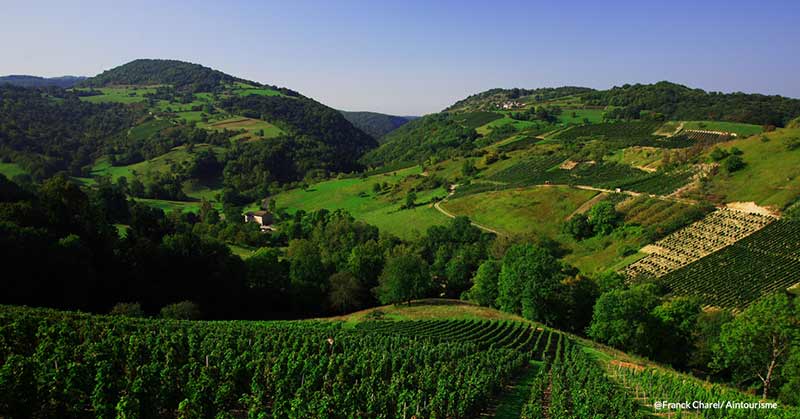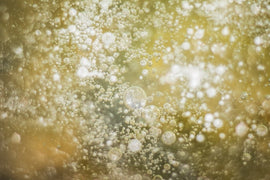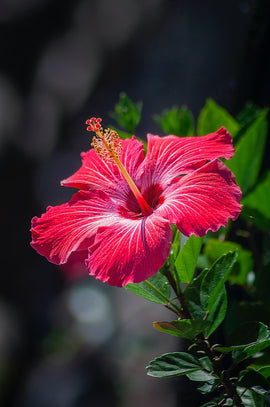France is best known for it’s top 5 wine producing regions; Burgundy, Bordeaux, the Rhone Valley, Provence, and Champagne. There are a multitude of other regions producing amazing wines that don’t always get the same attention as the big guys, so this month we wanted to introduce you to a few areas that don’t get the love they deserve.
Nestled in the Jura Mountains in the Savoie wine region, the Bugey AOC is a spectacular and unique wine region. Bugey produces an eclectic array of elegant, aromatic, and high-acid, low-alcohol wines that tend to travel no farther than local dinner tables. But, there’s good news for treasure hunters. Since earning its AOC status in 2009, these off-beat and affordable wines are slowly making their way to the U.S. You’ll find the Bugey is a "patchwork of terroirs". Although all the soils are limestone, there are at least three main soil types, each enhanced by the right choice of grape variety, perfected by human observation. First, there is the white marl clay soil of the Montagnieu wine area, the preferred soil for the Altesse (Roussette) and Mondeuse grape varieties. Next is the silica and limestone soil of the moraine hillside slopes, where Chardonnay excels. And finally there is the clay and limestone mountain screes, where red grapes such as Pinot Noir express themselves best. Native to Eastern France, Mondeuse Noir is somewhat scarce, and even more so from Bugey, the tiny AOC south of Savoie.
The Loire Valley is the heart of France, famous for its natural beauty, magnificent châteaux and great wine. The region is rich in history and culture: Renaissance writer Rabelais was born here; Joan of Arc led French troops to victory in the Hundred Years’ War in the Loire; and, as the Cradle of the French Language, its residents speak the purest French. The Loire Valley contains several distinct wine regions, each with its own characteristic grapes, appellations and styles. As a testament to all the region contributes to French and global culture, the Loire Valley (between Sully-sur-Loire and Chalonnes-sur-Loire) was added to UNESCO’ World Heritage list in 2000. The Loire Valley is broken into 4 main regions: Lower, Middle, Centre and Upper Loire. We are showcasing a white wine from the Lower Loire; a maritime region called Pays Nantais, which is all about white wines with bold acidity and salinity. Melon de Bourgogne is the most most widely planted grape in this region. As its name suggests, the grape originated in Burgundy and was grown there until its destruction was ordered in the early 18th century. In the vineyards around Nantes and the western Loire, however, the harsh winter of 1709 destroyed so many vines that a new variety was needed, and the Melon grape was introduced. Since then it has been used solely in the production of the light dry white wine Muscadet, which is made entirely from the Melon grape. The grape is so associated with its appellation that the grape itself is often known as Muscadet.
|
Region / Country of Origin: Bugey DOC, France |
About the winery: “Yves Duport is a staunch advocate for his charming appellation, and he pours his energy into making this Mondeuse the ultimate calling card for his region. This 12-hectare domaine has been built up for over four generations. Most of the plots have a clay-limestone soil facing south-south-east overlooking the last natural banks of the Rhone. Since 2007, they have switched entirely to organic farming and biodynamics. “This is how I give freedom to nature, both in terms of the soil through plowing and for my vines, which draw everything they need for their balance. This viticulture method gives full meaning to the expression of the terroirs that I express through our different wines.” Yves Duport. About the winemaking: After selection and harvesting by hand, the whole grape harvest is vatted in an atmosphere saturated with CO2 where it undergoes a cold pre-fermentation maceration (8 - 10°C for 48 hours), then alcoholic fermentation starts with a traditional maceration of about ten days. After de-vatting, malolactic fermentation is rapidly obtained before it is put in barrels (500 liters) to age for 12 months. They carry out all the wine making, aging and bottling on premise. Tasting Notes: The wine is a great option for Cru Beaujolais fans; light bodied, aromatic and fresh, the wine presents raspberry, pomegranate, banana peel, medium body, gripping, and fresh. Purple color, complex nose of red fruits, spices, structured mouth with supple and silky tannins; Racy, it can be rested in the cellar for about ten years. |
|
Winemaker: Yves Duport |
|
|
Price: $ $24 btl/ $259.20 case |
|
|
Suggested Food Pairing: An ideal accompaniment for braised meats, stews and cheese. |
|
|
Domaine du Grand Mouton - Louis Métaireau Muscadet Grand Mouton Sur Lie 2020 |
|
|
Region / Country of Origin: Pays Nantais, Loire Valley, France |
About the Winery: Louis Métaireau — along with his band of vignerons d’art, as his like-minded group of producers was known — was instrumental in restoring the reputation of the Muscadet appellation in the middle of the 20th century. It was he who first began leaving his wines sur lie (on their fine lees) through the winter, which gave rise to the IOP Muscadet Sèvre Et Maine Sur Lie. Louis’ daughter Marie-Luce Métaireau and her husband, Jean-François Guilbaud, followed by their successor, Julien Rossignol, have illustrated their deep love of the land by reclaiming the vineyards of the vignerons d’art and piecing them back together as one of the most prized sites in all of Muscadet: the Grand Mouton vineyard. The nine-hectare vineyard in the heart of Muscadet Sèvre et Maine enjoys perfect exposure between the two famed rivers that lend their names to the AOC and ranges in vine age from 30 years old to a parcel planted in 1937. About the winemaking: “To preserve our older vines for many years to come, we harvest them by hand. We also choose to apply sustainable agricultural techniques or "lutte raisonné", which involves minimizing the use of chemicals wherever possible; this method respects the environment and requires precise and constant monitoring of our vines. After resting on their lees over the winter in our concrete and glass vats, the cuvées are rigorously selected before being bottled in spring. This maturation phase or "mise sur lie" is an ancestral, artisanal practice. In the spring following each harvest, the wine is siphoned off from above its lees, without stirring or filtering beforehand. To continue this tradition, the majority of our production is bottled in this manner, via simple gravity.” Tasting Notes: The nose is very clean and focused with aromas of lime citrus and a light creaminess from the lees contact. The palate is well balanced between texture from the lees aging and a focused flavors of wet river stones, chalk and a lime. Older vines give this a little extra body and flavor, but it also keeps the pristine palate-cleansing freshness that singles out good Muscadet. |
|
Winemakers: Jean-François Guilbaud and Marie-Luce Métaireau |
|
|
Price: $25 bottle / $270 case |
|
|
Suggested Food Pairing: Oysters Moules Frites Shrimp Ceviche Zucchini Noodles Muscadet is the original white wine in beurre blanc sauce! |
|





